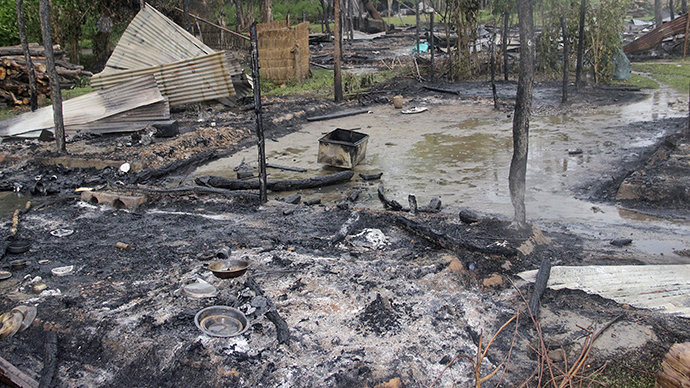Home Ministry Report Shortlists Four Insurgency Prone N-E States
Four North-east states have seen a spurt in violence

NEW DELHI: The Union Home Ministry’s annual report enunciates the fact that four north-eastern states- Meghalaya, Assam, Nagaland and Manipur continue to account for the majority of the insurgency-related violence in the region.
The report further divulges that Mizoram, Tripura and Sikkim have remained largely peaceful, adding, that non-violence has been prevailing in even the ‘land of the dawn-lit mountains’- Arunachal Pradesh, barring a few violent incidents.
The Annual Report for the term 2013-2014 has further stated that apparently, the north-east region of India has remained peaceful and the law and order situation has ameliorated in comparison to the last year.
The report evidently shows that there has been ““overall improvement” in the situation of the North-east in contrast to the 2012-2013 report.
However, there has been an exception in the state of Meghalaya where casualties have rather gone up this year mostly because of extortion and abduction.
The Home Ministry report stated “The security situation in some of the northeastern states has remained complex for quite some time because of diverse demands advocated by various militant outfits”.
Describing the situation in Meghalaya, the report adds that the militant activities are chiefly centred in the five districts of Garo hills region — West Garo Hills, East Garo Hills, South Garo Hills, South West Garo Hills and North Garo Hills. The adjoining West Khasi Hills, which has a substantial Garo population, is also affected by the Garo hills militancy.
Additionally, the report mentions that militant groups active in neighbouring states like Ulfa, NDFB, NSCN (I-M) and others “have been using the Garo hills corridor for sneaking in and out of Bangladesh” taking advantage of the adverse geographical conditions and the remoteness of the area.
“Militant outfits of the neighbouring states have encouraged, trained and nurtured Garo militant groups like the A’chik National Volunteer’ Council (ANVC) and the Garo National Liberation Army (GNLA). The Ulfa, NDFB and NSCN (I-M) also have their command structure in Garo hills,” the report added.
Revealing the fact that the Cabinet Committee on Political Affairs had on February 28, 2014 approved a proposal for implementation of the Agreed Text for Settlement signed between the Centre, Meghalaya government and the ANVC, the report said that the ANVC has been rather demanding more powers to the Garo Hills Autonomous District Council (GHADC).
On the other hand, ANVC has been maintaining that the state government never wanted it to come for the peace pact. “There is no official suspension of operations despite us making appeals and the state government getting directives from the Centre. They did not even provide us a camp nor rehabilitated our cadres,” it recently said.
However, the memorandum of settlement hasn’t yet been designed.



